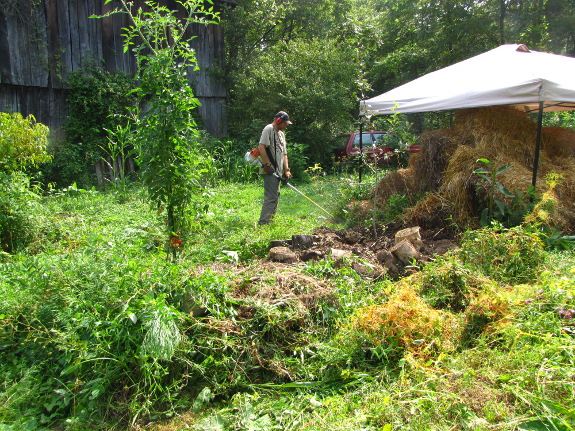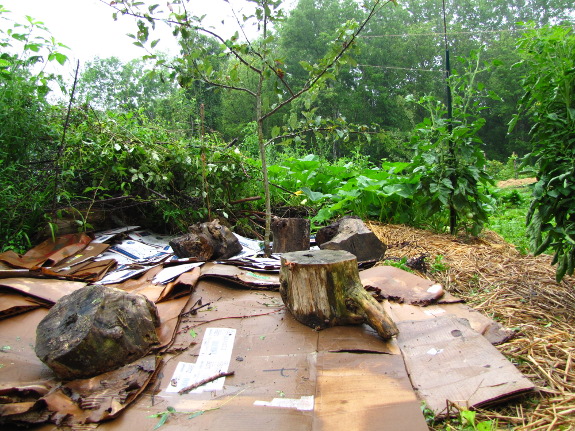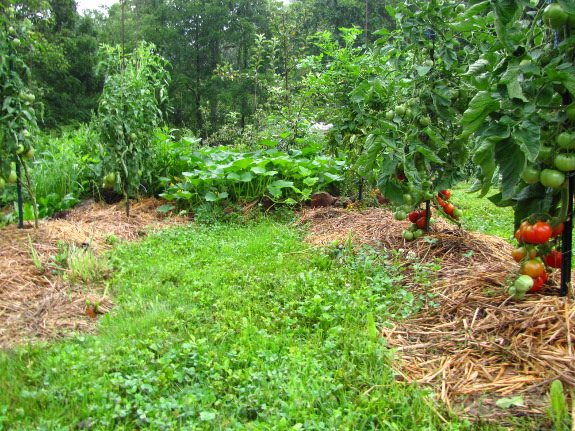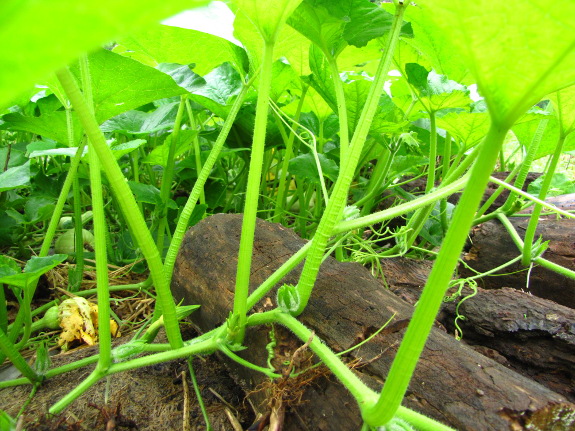
Seven years of bad weeding
 Many people believe that if
you break a mirror you get seven years of bad luck. The only
mirror I own is at the entrance to the chicken coop (a reused closet
door), so I can't speak to the truth of the mirror legend. But I
can tell you that if you let weeds go to seed in your garden, you're in
for seven years of extra work.
Many people believe that if
you break a mirror you get seven years of bad luck. The only
mirror I own is at the entrance to the chicken coop (a reused closet
door), so I can't speak to the truth of the mirror legend. But I
can tell you that if you let weeds go to seed in your garden, you're in
for seven years of extra work.
Even though we
reclaimed the forest garden from the weeds last summer, we'll be putting in extra
effort for the next few years to ensure that the offspring of those
weeds don't regain a foothold. I've got three weapons in my
anti-weed arsenal at the moment --- kill mulches, tomatoes, and
butternuts.

Kill mulches are the
obvious solution. I rip out as many of the weeds as I can, then
top what's left off with a heavy layer of cardboard and then wood chips
(around the trees) or straw (around the vegetables). I've found
that in areas with vigorous vines, like Japanese honeysuckle, it may
take multiple kill mulches a few months apart to really wipe out the
invaders.

Next, I plant tomatoes
next-door to the trouble zones. Mark and I love tomatoes more
than any other plant in the summer garden, and they're a bit of a
struggle in our humid climate. So I commit to pruning off
diseased leaves and new suckers every week, then tying the tomatoes up
to their stakes. The result is that I pay attention to that part
of the garden on a regular basis, and no weed goes to seed without me
noticing.

The final solution in my
anti-weed campaign this year is butternut squash. Although we
love butternuts, I consider them plant-it-and-forget-it crops.
But as long as the weed pressure is relatively low, they do a pretty
good job of acting as a living mulch, shading the ground so seeds don't
germinate.
So far, I'm very pleased
with the results --- for the first time since we moved to the property,
the forest garden is starting to look like a productive and happy
place. Maybe it won't take a full seven years to outrun our bad
luck after all.
Want more in-depth information? Browse through our books.
Or explore more posts by date or by subject.
About us: Anna Hess and Mark Hamilton spent over a decade living self-sufficiently in the mountains of Virginia before moving north to start over from scratch in the foothills of Ohio. They've experimented with permaculture, no-till gardening, trailersteading, home-based microbusinesses and much more, writing about their adventures in both blogs and books.
Want to be notified when new comments are posted on this page? Click on the RSS button after you add a comment to subscribe to the comment feed, or simply check the box beside "email replies to me" while writing your comment.
